This article was published as a part of the Data Science Blogathon.
Introduction
“Knowledge is power in business, and data is the fuel that creats this power “
As data scientists, we know that being able to harness the power of this data through data science is highly valuable. Data science uses scientific methods, processes, algorithms, and systems to extract knowledge from data, and use the maximum advantage of this data to make major decisions is a key strategic practice for any business. Due to emerging of the new digital era, nowadays data proves to be a powerful lifting up of the industry. Big companies are starting to invest in the data for a more reliable form.

Moreover, data has become of great importance for those willing to take profitable decisions during the business. Data needs to be very beneficial for every company’s decision-maker, a thorough analysis of a vast amount of data allows influencing or rather manipulating the customers’ decisions.
When we talk about retail in business, then it develops rapidly day by day. If you don’t know about retail, then we discuss it here,
Retail is a subset of business where its sale occurs when a business sells a product or service to an individual consumer for his or her own use. The aspect of the sale that qualifies it as a retail transaction is that the end-user is the buyer. when we talk about the transaction itself it can occur through a number of different sales communicators, like online, direct, etc…
The connection of retail develops rapidly, the retailer analyzes data and develops a scenario for the customer. Therefore, a customer tends to be easily influenced by the tricks developed by the retailers. Such good examples of retail are wall mart, target, etc…
You know that there is a need for data is high, and this retail industry is generating a large amount of customer data. Data science helps to gain insights from this data about the customers and market merging trends.
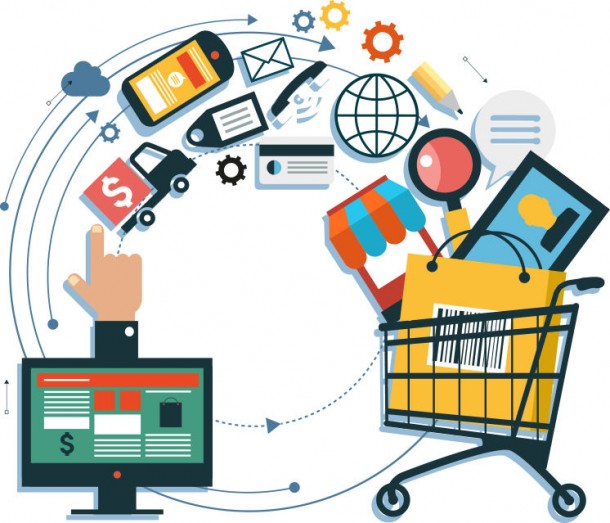
In this article, we will discuss the top 10 Data Science use cases in retail, here we explore the key point of these cases and then we go into a detailed discussion.
1. Price optimization
2. Personalized Marketing
3. Fraud detection in Retail
4. Utilizing Social Media
5. Implementing Augmented Reality
6. Merchandising
7. Location of New Store
8. Inventory Management
9. Customer Sentiment Analysis
10. Recommendation System
There are the top 10 Data science use cases that were used by retail industries to grow their industries in today’s world.
So let’s discuss these cases in details one by one:
1. Price Optimization
Suppose if you are a customer, then what will be significant for you during shopping? its price, quality, and many more other fundamentals but what if you get better quality at a low price, definitely feel happy🤩. SO, everything is depending upon the price, 70% of the total consumers believe that the main reason behind purchasing any product is its price. Yes, it also applicable for the retailer, according to the mentality of producer price is not only depends upon how many materials are used during production but also on what type of customer will purchase that product. The tools for data analysis bring this issue to a new level of its approaching.
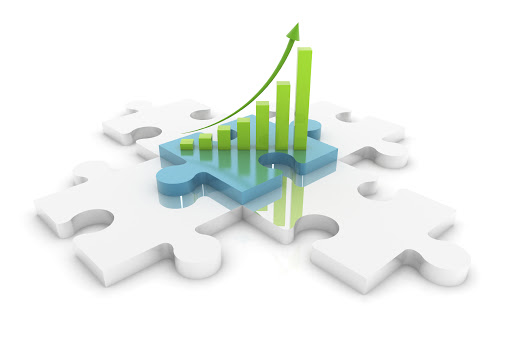
If you know there are a variety of optimization tools in data science that helps the retailer to identify the secret approach of the customer. some of them are:
- Customer segmentation
- Mystery shopping
- Flexibility of price
- Competitors pricing etc…
There are various algorithms used by the price optimization model to perform the real-time analysis of the customer’s feedback, and response towards the sales, discounts, marketing campaigns, etc…
Use of Data Science in Price Optimization
So, let’s talk about how data science is used for price optimization and what are techniques for using data science in price optimation.
When we talk about the technique, Then Machine Learning techniques can be used in many ways to optimize the price in retail industries.
Machine Learning helps retailers to develop more complex strategies that work far better to achieve their key buisness objective.
As a data scientist, you know that a Machine Learning model is only as good as the data it’s fed. Thus, we have to carefully evaluate data sources in the first step, then take observation that the data we feed, is that best fit into the model or not.
Let’s see the steps needed to develop a Machine Learning solution for this use case:
1. Gather data
At first, like data science, we need a sufficient amount of data to train the machine learning model. It is necessary to have different types of information. In any case, the model must first be trained using an initial data set before it can begin price optimization. for example, the transaction history of the customer, description of the products, customer reviews, geographical location, etc…
2. Set a goal
When we go to the next step, that is to define the strategic goals and constraints. Retailers clarify the objective of the profit maximization behind the customers. However, they may also be interested in customer loyalty.
Each particular scenario will impact the way the problem is modeled. It is possible, and usually very interesting, to test different scenarios for the same retailer, which implies using different models
3. Modeling and training
This is the important step in the price optimization process, the data previously gathered is used to train the Machine Learning models.
When we talk about price optimization there is a variety of model are used which are more complex and powerful. For instance, depending on the amount of data is present, Such algorithms can be supervised or unsupervised, explainable or unexplainable, etc. It could be possible to use deep learning techniques or any other powerful algorithmic method.
suppose we deal with the new product for the upcoming season, then the interesting thing is that the Machine Learning models will know how to find similar products and be effective despite not having specific prior data. The model goes through thousands of iterations, testing assumptions, and adjustments of its prediction mechanism.
4. Execute
Now it’s time for execution of the predicted price across the world. The prices obtained by the model can be subsequently adjusted manually by the retailer and optimized regularly.
2. Personalized Marketing
Marketing strategy is the best technique to attract customers, and it is profitable for retailers. When we talk about its process then it collects the transactions data of customers. Future decisions and choices may be predicted on a large scale by this technique. knowledge of the items with likes dislikes, and previews are more beneficial when they create scenarios of marketing.

The analysis is usually conducted via a rule mining algorithm. It collects the useful from the data, a special function accepts the data, splits it according to some different factors, and drops the useless or not required data.
Understanding the data science workflow will allow your marketing team to communicate with the data scientist effectively. Data science techniques such as machine learning, regression, and clustering have transformed marketing from a creative branch to one that involves science to understand and influence user behavior:
Steps needed:-
1. When we collect the data then, we will perform some exploratory data analysis to get an idea of the right model to find the insight we are looking for.
2. Now we will pick the best model that fits our data perfectly, and when the model executes it will give the best accuracy.
3. After the model is chosen, the data is formatted in a workable way. This could involve figuring out how to deal with missing values, duplicates, or other variables that make the model harder to apply.
4. Finally comes fine-tuning the model. This means the model isn’t overfitted to the data and that it runs as it is supposed to.
Use case in real life
Let us take an example of a marketing scenario of professionals, suppose a company is spending a small fortune on marketing and the strategy they make works perfectly but the return on investment is nowhere near expectations. but As a data scientist, we collect the most informative data from the website about customers, this understanding goes beyond age, geographic location, and gender of yesteryear. And with this data we get the analysis report then we will give details about what else this customer is likely to shop for.
3. Fraud detection in Retail
we know that gaining the customer’s trust is the most important factor that affects the growth of industries. what if, there is having fraud with customers? then industries destroyed the trust of the customer and facing huge loss by these activities.

Data Science in retail helps to protect the company’s reputation. Fraud detection is becoming a challenging problem for retailers. After getting some financial losses, the companies are now taking help from the new digital technology which is machine learning and neural networks concepts. This enables them to always keep a check on all the activities and capture any Fraudulent activities.
Frauds are also isolated using several outlier detection techniques. Outlier detection tools have their own way of tackling the problem, such as time series analy, cluster analysis, real-time monitoring of transactions etc.
And when we talk about the machine learning techniques for solving this problem:
Techniques
Supervised ML algorithms: logistic regression, neural net, time-series analysis
Unsupervised ML algorithms: Cluster analysis, Bayesian network, Peer group analysis, breakpoint analysis, Benford’s law (law of anomalous numbers)
Statistical techniques: average, quantiles, probability distribution, association rules.
Real-life Example:
Day by day frauds are increasing, many frauds are occurring during online transactions in which credit card frauds have always existed but the magnitude is only growing recently due to increasing online transactions taking place through credit cards every day.
The RBI said, there was a concentration of large value frauds, with the top fifty credit-related frauds constituting 76 percent of the total amount reported as frauds during 2019-20. While bank frauds, both in value and volume terms increased in 2019-20, data suggest, for the period April – June 2020, as many as 1,558 frauds were reported amounting to Rs 28,843 crore, which is less in comparison to the 2,024 frauds reported in the same period in 2019 amounting to Rs 42, 228 crores.
4. Utilizing Social Media
Everyone is using social media in the current world because it is the best way of communication between utilities. The retail industries are taking the help of these communication bridges or technologies for their marketing throughout the world. Social media provides a large amount of customer data to the retailers, which helps to find the patterns, customer behavior, and trends.

Data scientists and researchers at social media companies benefit from having direct access to the code base and the ability to update it frequently for their own purposes. They are not limited to link onto existing processes and hacking together instrumentation to imbue meaning—if they want a piece of data collected regularly, they can create code to collect it.
Technique
For social media marketing, the data scientist first created clusters of strategies, and the clusters created through complex modeling help data scientists test their results in managed advertising campaigns. Strike’s data scientists and media teams work together to develop micro-campaigns that enable discrete testing of data combinations. When a combination performs or meets key performance indicators, ad spend is re-allocated from under-performing ad sets to those more on target.
The continuous process of inquiry, modeling, and testing never stops in the world of data analytics — nor can it stop, for the data is ever-changing.
Real-world example
Social networks have been on the minds of researchers long before the Internet came along. Sociologists were looking into the ways that people were tied together through their daily contacts and personal ties way back in the 20th century.
The most famous social media name is Facebook, it rules the world since it has been started. Many industries are using it for marketing strategies. And there are many like Facebook who uses social media for the marketing purpose.
5. Implementing Augmented Reality
The AR (Augmented reality) in the context of Data Visualizations can get a bit more complex and much more Dynamic in nature. While the camera shows the Image of a particular domain, the domain itself is marked with specific points (either in a Marker or Markerless mode), such that when a particular Point in the Domain is in View of the Camera, the AR system can detect the Specific Point and then become aware of what that Specific Point is.
When you ever hear the sentence during any ad scenes “Try before you buy” many retail companies have used this word for marketing. AR or augmented reality provides the real-time experience of the product to the customer. AR has quickly become an essential technology for retailers.
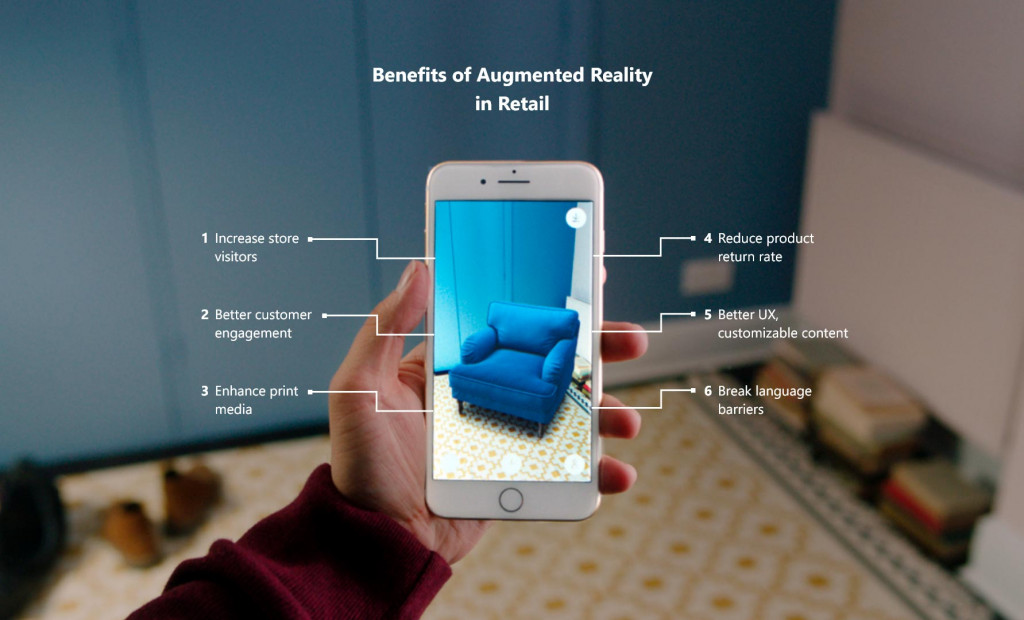
Retailers are beginning to use AR technology to reimagine the digital shopping experience with virtual storefronts. Some AR applications are Snapchat, lenscart, amazon, Instagram, etc…
Retailers can connect with customers in real-time by offering them what they are looking for, with the right information and tools, to help them make an informed decision. For example, mapping the navigation to the products customers are looking for and notifying the customer of deals and special offers. Consumers can set clear interactions regarding the color, size, fitting, etc. before purchasing the product.
Real-time experience
Augmented reality doesn’t require goggles to experience the real world. Rather than venturing into the environment, the augmented pictures come alive in your environment. You experience them in front of your eyes in a natural way. Whereas, with virtual reality, you need to wear goggles to experience the environment.
6. Merchandising
Suppose when you are a shopkeeper, then for earning you will promote your product to the customer for purchasing, So here Merchandising refers that the activity that helps you to promote the product when a customer came for purchasing the item. Merchandising has become an essential part of the retail business.
It uses the technique where if the customer purchasing the item then the machine learning algorithms manipulating with customers decision, and encourage to purchase more product. Retail constitutes three foundational pillars – assortment, experience, and value i.e., what products you need to sell, how would you sell them, and at what price.
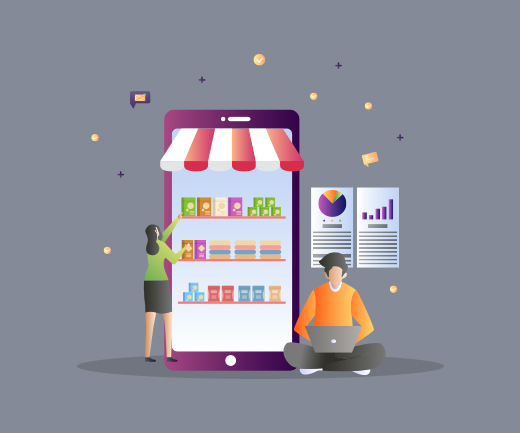
Many techniques will be used for manipulating the customer’s decisions some of these are:
- arranging products effectively on the shelves
- attractive packaging
- presentation of the products
- providing gifts,
- attractive prices
Real-life examples
suppose, you are going to purchase any product online on any e-commerce website, if you wish to purchase laptops for your work and when you will search for laptops for data science, after selecting the laptop you go fo purchase at that time you noticed that popup will generate and there are something bag related products which were displayed in front of you to purchase this times along with the laptop.
7. Location of New Store
What if you know, the right place to set your new industry? that’s amazing for you, Wright here Data science helps the retailers to find the best places for implementing new stores for selling their products. It uses the decisions of the customer concerning area, for this analysis, there is a large amount of data is required. Such as the customer data available online, market trends in that area, the location of the other nearby shops, etc.

Using data science, geospatial analysis, and machine learning techniques, this project aims to provide a solution for this problem and recommending the best neighborhood for opening the new store.
the main points to be well settled for the shop:
• Must be in areas with high household income
• Must be in areas with increasing economic growth
• Ideally in areas where there are millennials as well as retirees
• Ideally near major transit stations
• Ideally near Apple stores
• Ideally far from other grocery stores
Example
Common examples include Wendy’s, a popular burger chain in the US, which leveraged location analytics to identify new store locations and save nearly $750,000 in the process. In another case, an international airport based in the US used location analytics for faster customer check-ins.
8. Inventory Management
The name suggests, the management of the essential things for the future. The retailers aim to fulfill the customer needs at any instant of time, at the proper place, in good condition, etc… Today’s inventory control systems now also hold the key to powering business insights that can help you make data-driven decisions for increased productivity and profitability.
an inventory system can also provide you with unparalleled insights into customer behavior, product performance, and channel performance, made possible even for large retailers with huge datasets.
1.Stock availability.
2.Sales demand.
3. Product returns.
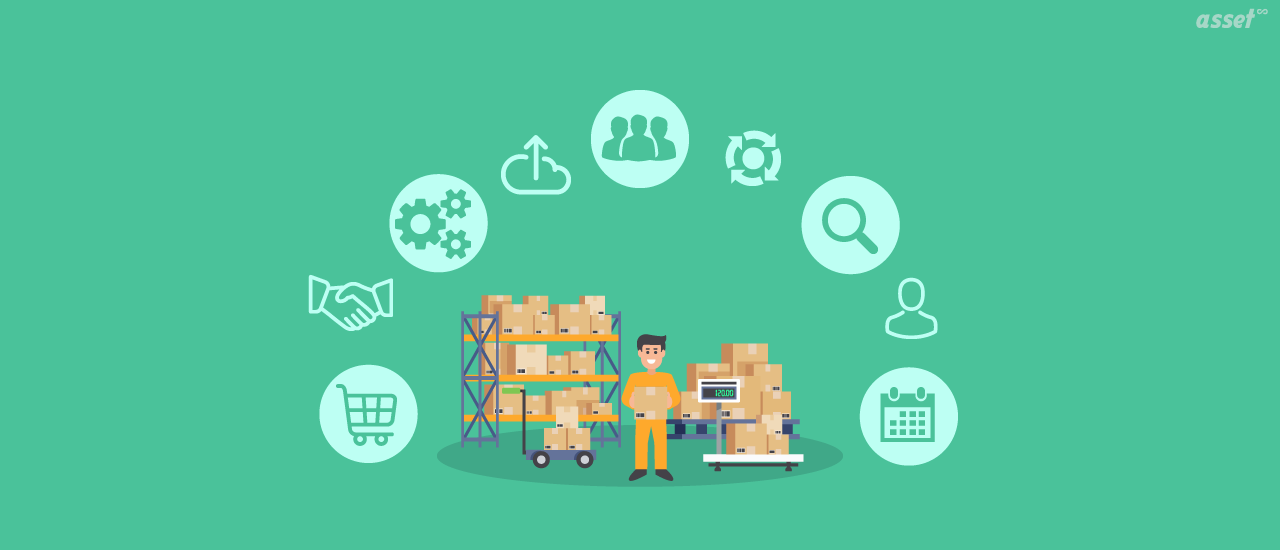
There are powerful machine learning algorithms in data science that detects the patterns, relationship between the elements and supply chains. we can create the strategies by developing the parameters of the machine learning algorithms. the analyzer spots the patterns and trends and manages the stock implementing the data received.
9. Customer Sentiment Analysis
The most widely used technique all over the world for marketing purposes. With the use of sentiment, the industries collect the subjective information of customers to understand them better. The implementation of Data Science in retail has made customer sentiment analysis much simpler and easier.

There are so many powerful tools in data science that will help retail industries to find the sentiments of customers by raking feedback from them. One of them is Natural Language Processing (NLP) by this sentiment analysis model can detect the sentiments from the text, If the customer is giving positive or negative feedback to the product can be detected by NLP.
10. Recommendation System
What if you say your friend to advise on this topic, then it will recommend you something good or bad on that particular topic, So, in the recommendation is good for retailers to develop good marketing strategies. In data science, recommendation systems proved to be of great use for the retailers as the tools for customers’ behavior prediction. It helps to gain the customer opinion of any particular product. Providing recommendations enables retailers to increase sales and to dictate trends.
These recommendation engines are of two types:
1. Collaborative recommendation system
2. Content-based recommendation system
Now, we talk about these two types of recommendation systems that are used by retail industries to improve their
Collaborative recommendation system
This filtering is based on the description or some data provided for that product. The system finds the similarity between products based on their context or description. The user’s previous history is taken into account to find similar products the user may like.
For example, if a user likes movies such as want to purchase laptops then an e-commerce website will recommend you the essential requirements with laptops such as laptop bag, cover, etc…
Content-based recommendation system
The recommendations are done based on the user’s behavior. The history of the user plays an important role. For example, if the user ‘A’ likes ‘laptop’, ‘shoes’ and ‘bags’ while the user ‘B’ likes ‘cloths’, ‘laptop’ and ‘bags’ then they have similar interests. So, there is a huge probability that the user ‘A’ would like ‘cloths’ and the user ‘B’ would like ‘shoes’. This is the way collaborative filtering is done.
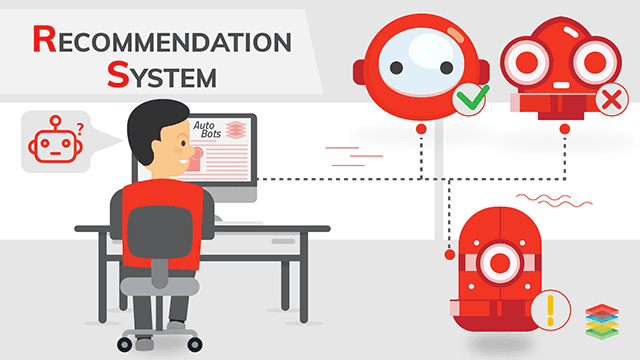
This process is done by collecting the past choices and made decisions from them and then preferred products are considered for customers. The recommendation engines compute a similarity index in the customers’ preferences and offer the goods or services accordingly. With the use of recommendation system in the industries the revenue of retail industries grow up rapidly and it is good for the current world.
Endnote
I am Mayur Badole currently pursuing a B.tech in a branch of computer science, I am a beginner and a little bit intermediate in the field of Data Science. I hope You like this article and if you have any queries regarding this article then put a comment below.
Connect with me on LinkedIn: Profile
For more articles visit my link: https://www.analyticsvidhya.com/blog/author/mayurbadole2407/
Thank You😎
The media shown in this article on Data Science in Retail Industries are not owned by Analytics Vidhya and is used at the Author’s discretion.






“Having you on the team makes a huge difference. on demand app solutions